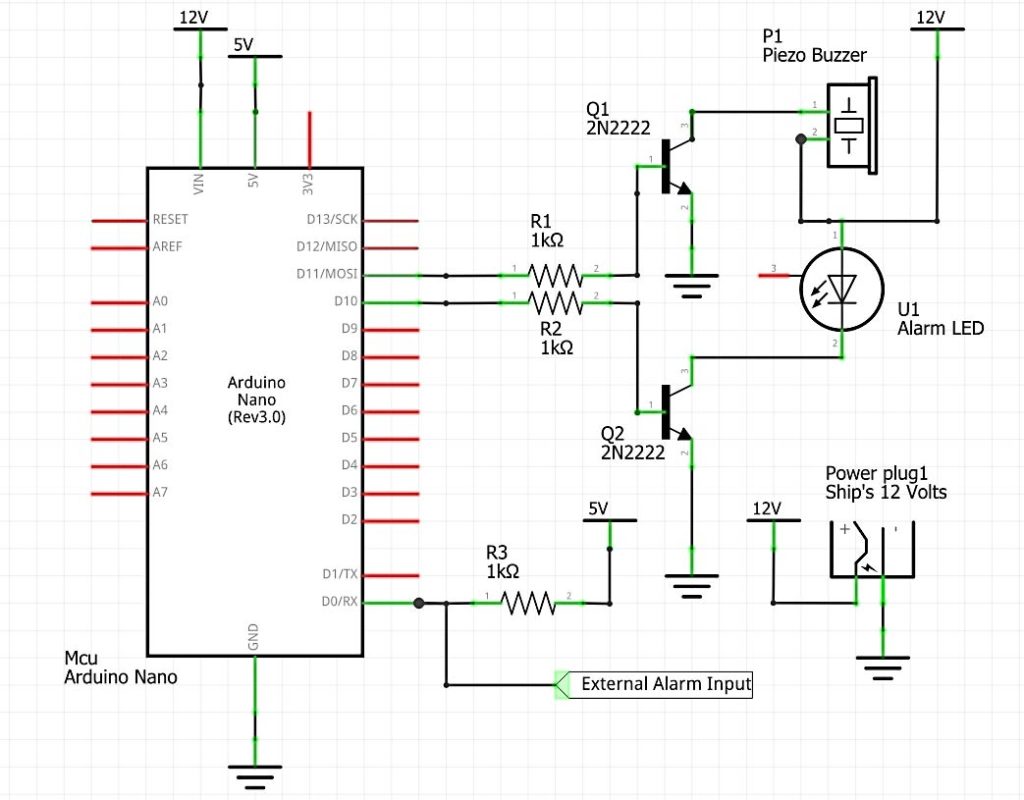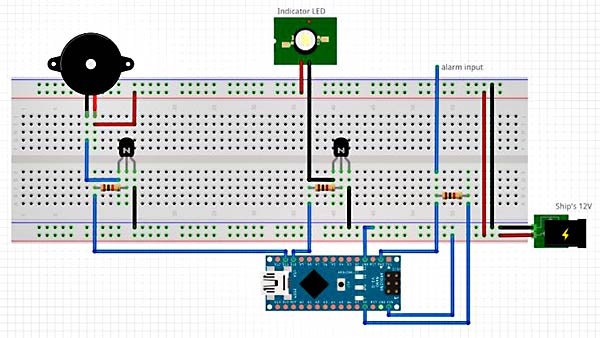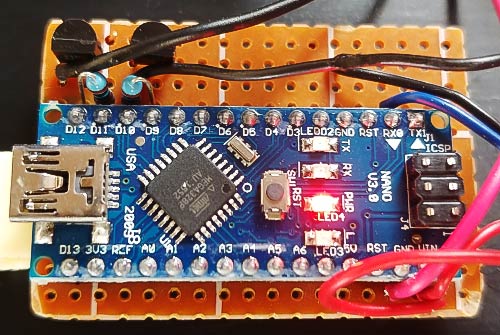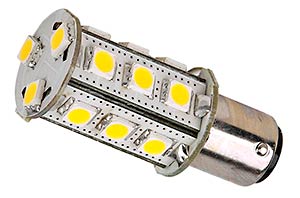February 18, 2018
Our new Simrad NSS9 EVO3 chartplotters have very quiet alarms, but they do have an alarm-out signal that can be used for an external alarm. To make sure we hear alarms for things like boats entering the radar guard zone and dangerous vessel on AIS, I built an external alarm using, at it’s core, a little Arduino single-board computer.
Here’s a very short video of the alarm in action…
(Note: the black box that says “Hear It” on the front is not part of the alarm. That’s actually a speaker for the SSB radio that has a built in DSP (Digital Signal Processor) to make voices much easier to hear and understand over the radio. Highly recommended.)
Here are the details in case you want to make your own external alarm (some assembly required ;-)…
The schematic for the circuit…
Since both the LED light and the alarm draw more current than the Arduino can safely supply, I’ve used two 2N2222 NPN transistors to switch them on and off. The external alarm signal from our Simrad EVO3 chartplotters is open-collector so when the alarm is activated, the alarm input is pulled low. When it’s not active, it’s tied to +5 volts through the 1K resistor. That resistor is a fairly low value so that the stray EMI from the SSB won’t trigger the alarm.
And a breadboard layout (done in Fritzing)…
Click this link for the Fritzing Files for the Above
I used an Arduino Nano but almost any Arduino will work. I picked the Nano because it has a built in voltage regulator and I can supply the alarm with ships 12 volts (which on Legacy, may run as high as 14.8 volts).
I put the extra bits on a perf-board and soldered the Nano on that same board (yes, I know it would have been better to socket the Nano but it turned out to be a tight squeeze to get the parts in the box).
The piezo is from Jaycar – here. It really isn’t quite loud enough and I may replace it with a louder buzzer.
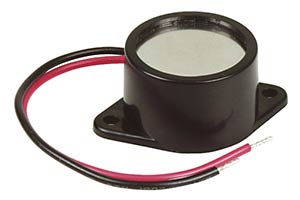
I found the lamp housing at a local marine store. It’s not easy to find one for a boat that’s all-around red. I’ve been on the lookout for something that would work for this application for a while and finally found it at Steve’s Marine in Tauranga, New Zealand.
The lamp I used inside is also from a marine store and is an all-around white LED bulb similar to this one from West Marine: here. A red LED bulb would have been better, but I made do with what I could find locally.
And here’s the code (or sketch as it’s called in Arduino parlance):
There are some notes at the top of the sketch that I hope explain it pretty well. There, I noted that I should have selected a different digital I/O pin for the alarm in signal that doesn’t interfere with programming the Nano. That should be a very easy change.
-Rich

